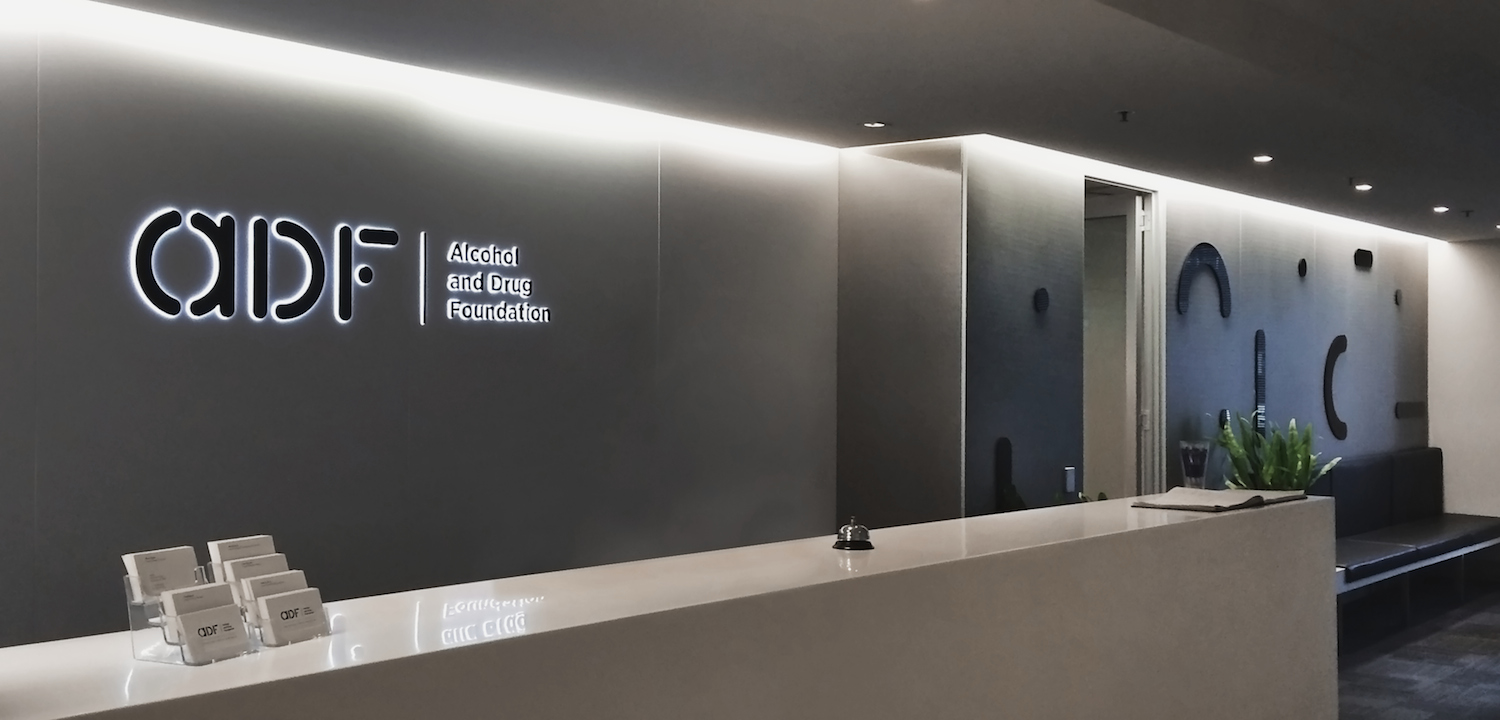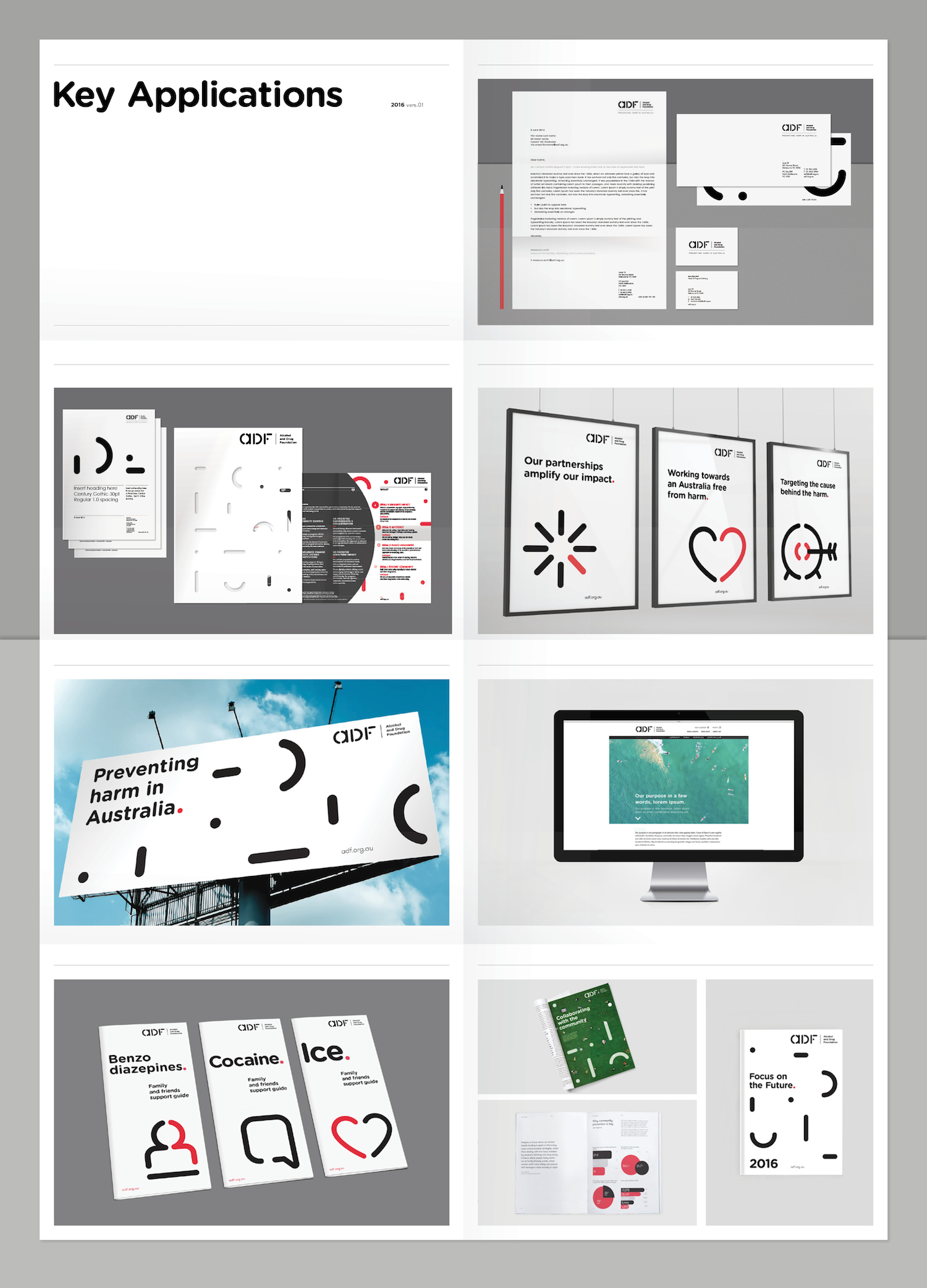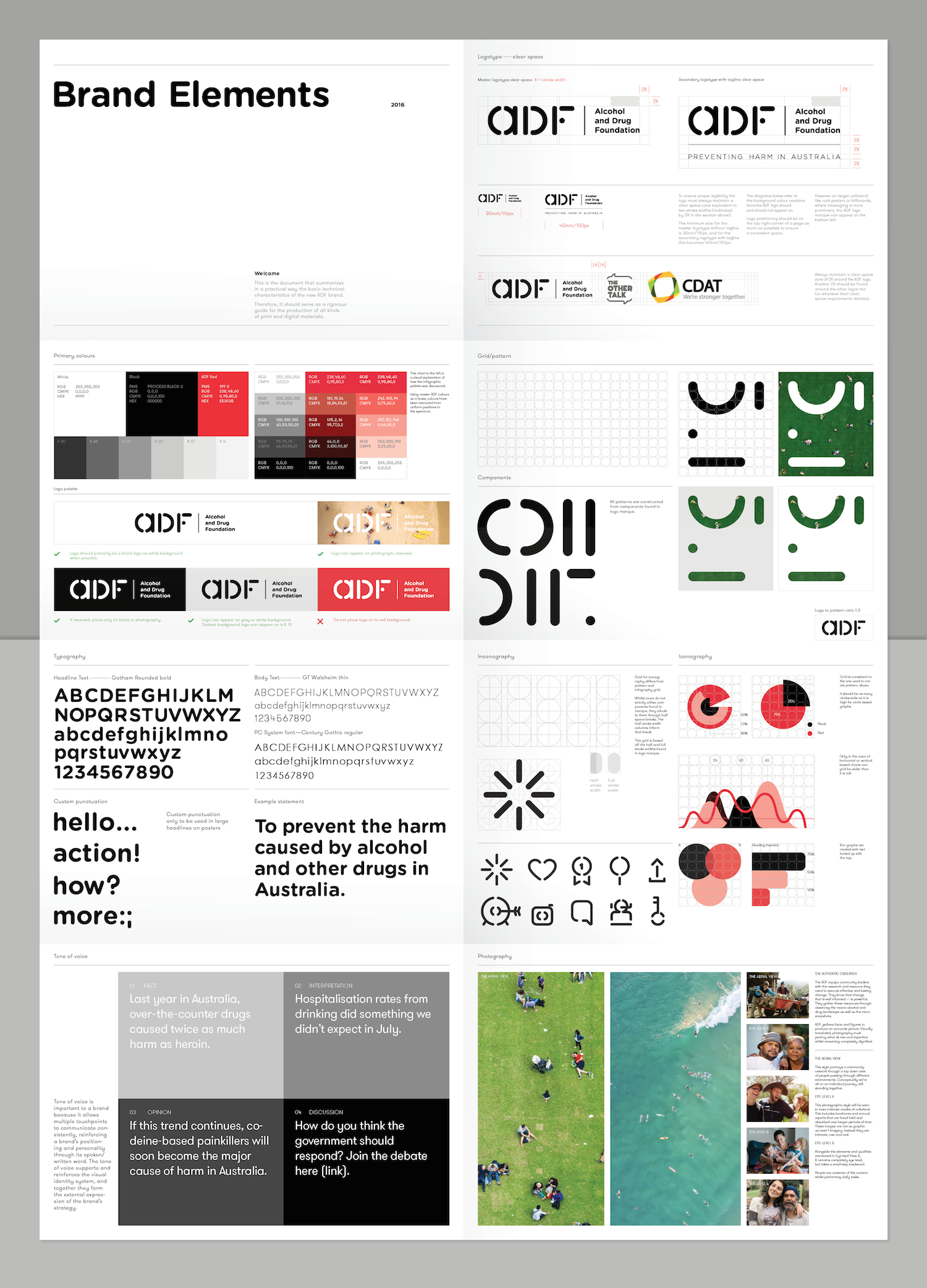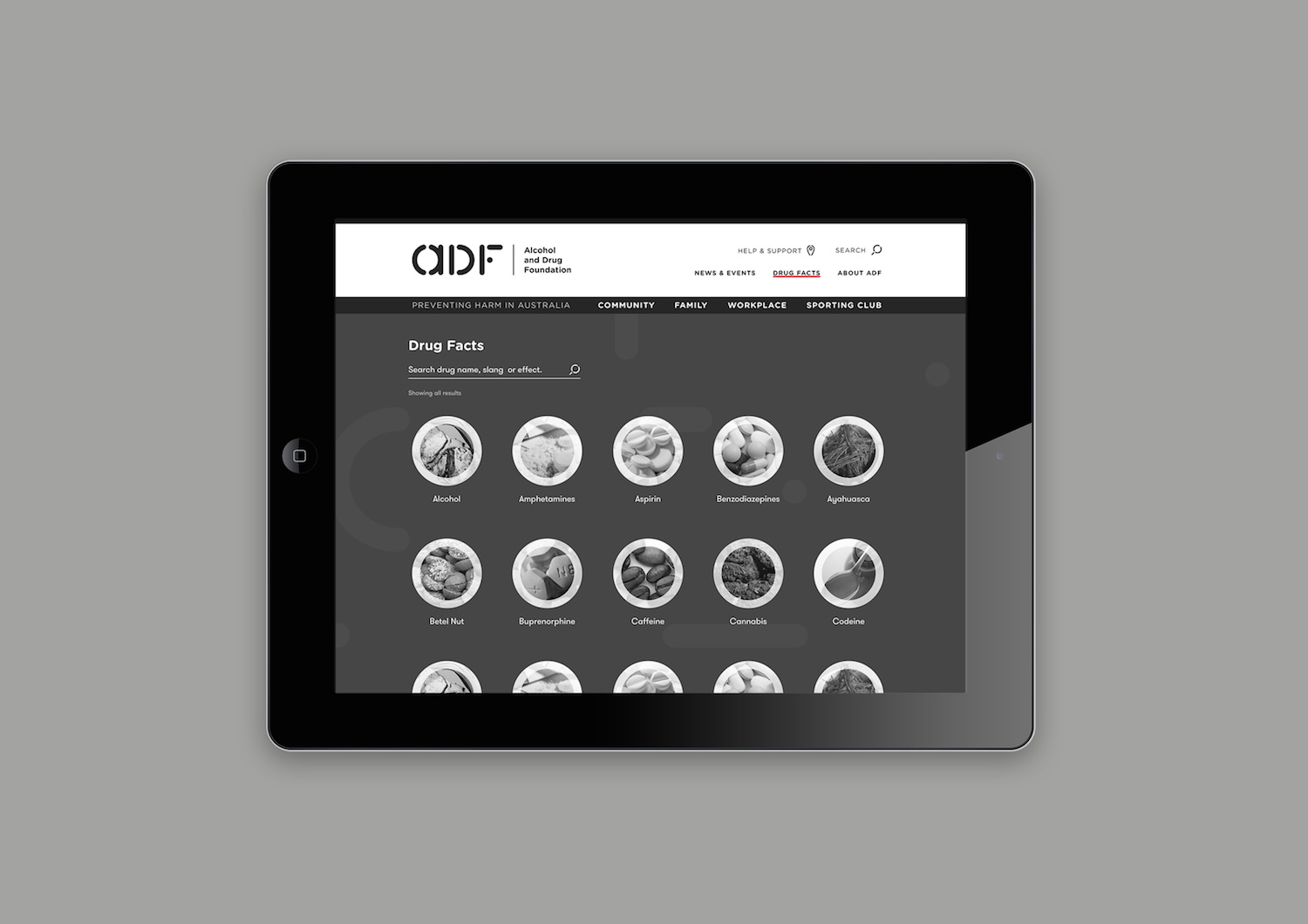Interview: Alcohol and Drug Foundation on redeveloping its brand structure and design
Share
In a country where having a drink is part of the national identity, the principal national body for reducing harm caused by alcohol and drugs is changing its own identity to better deliver its services. Marketing speaks with Rebecca Lovitt, head of engagement at the Alcohol and Drug Foundation, and Luke van O of Saffron, the brand consultancy that opened shop in Australia this year.
_
This article originally appeared in The Identity Issue, our October/November issue of Marketing magazine.
_
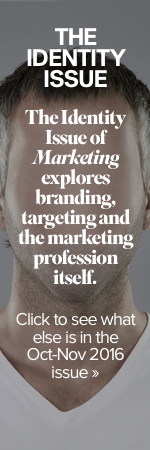 In its more than 50 years of operation, ADF has seen the landscape of drug use in Australia shift regularly and, with it, the demand for its services. This year has seen one of its biggest shifts: a change of name from Australian Drug Foundation to Alcohol and Drug Foundation, as well as a major redevelopment of the brand structure and design.
In its more than 50 years of operation, ADF has seen the landscape of drug use in Australia shift regularly and, with it, the demand for its services. This year has seen one of its biggest shifts: a change of name from Australian Drug Foundation to Alcohol and Drug Foundation, as well as a major redevelopment of the brand structure and design.
The change in name reflects the fact that, in Australia, alcohol is the major cause of harm to people. The unhelpful thing is that conversations about ‘drugs’ these days tend to default to the illicit kind, a category that’s blown out of proportion considering alcohol and pharmacy medication are both significantly bigger problems.
With alcohol being a part of the Australian national identity, to be effective ADF must be careful to educate and influence behaviour in a way that isn’t seen as a criticism of people’s values. That’s one thing that separates this discussion from the one around tobacco advertising in the 80s, so while ADF may like to see alcohol advertising banned in sports, its immediate, day-to-day efforts are elsewhere.
The organisation delivers its work at three levels. At the system level, the policy change level, it focuses on advocacy. At the broader population level, the ADF works to shift awareness around the harm of alcohol and drugs, and also attempts to help people develop healthier relationships with alcohol and drugs.
At the grassroots level, ADF delivers a range of programs. One of the biggest is Good Sports, delivered through community sports organisations. Good Sports has been extremely effective at battling a culture of drinking in sports clubs, especially considering it’s a key hunting ground for alcohol marketing, too. The program, which started 15 years ago and involves 7000 sports clubs nationwide, can reduce harm from alcohol and drugs by around 40%, and is cited internationally as a case study.
ADF’s position is not as police, but sensible friend. It doesn’t try to convince local footy clubs to ban alcohol, just to avoid giving away wheelie bins full of beer at pie nights. The guiding principle is a focus on harm reduction, rather than what is philosophically the most appealing or the government flavour of the day.
In one example, ADF is currently committed to getting pill testing at music festivals. In another, it does not endorse the move to make codeine available by prescription only, citing international examples where removing the supply caused further harm to people with addictions.
But the success of Good Sports, along with the popular DrugInfo website, created a marketing challenge. Well-known and successful sub-brands need to be handled with the utmost care.
It’s in this context the ADF set about rebranding. We find out why, and how the rollout is going, from Rebecca Lovitt, head of marketing and engagement at ADF, and Luke van O of Saffron, the brand consultancy that opened shop in Australia this year after being founded in 2001 by Wally Olins and Jacob Benbunan.
Marketing: What were the driving forces behind the need to rebrand the organisation?
Rebecca Lovitt: Essentially, there hadn’t been any type of strategic lens placed on the brand previously. I hope that doesn’t sound harsh, but there was a plethora of tactical approaches without any overarching rationale, leading to inconsistencies visually, in terms of messaging and all the rest.
The question was how we could build a brand that is much more responsive, much more community-centred and much more ready to build dialogue with community, which is where we want to move to.
I had a strong sense of where we needed to go, but I needed a bit more evidence and external validation, particularly for our board, to justify why we were moving forward in this way.
We had the Good Sports brand as one of our major sub-brands, and we had ADF. It became clear that Good Sports served the community audience as a consumer-facing brand, while the ADF brand was really only working for our academic and health sector partners.
To reach community leaders, we’ve started to explore the notion of Future Communities as our second sub-brand. It’s got a broad community focus, but also an aspirational brand identity that allows the ADF to remain the expert corporate brand.
Luke van O: With that arrangement, you can consolidate the various activities and programs into one of two brands based on who they’re for, which allows greater focus on ADF’s stakeholders, while acknowledging all the activities that go on at ground level.
We had to acknowledge all the success and the equity built within the ADF and the Good Sports brand over time and maintain as much of that as we can while positioning correctly for the future and for new audiences.
RL: What is interesting about the ADF as an NGO (non-government organisation) is that we’ve been incredibly successful with government funding. We do a piece of work the government isn’t set up to do in terms of delivering national services around harm prevention. That’s one of the reasons we stayed with the ‘ADF’ initialisation – it already had strong government buy-in. They know us as the ADF and we’ve been around for a long time. The name change kept that critical funder audience happy. It also allowed a bit of an evolution to make a little bit more sense to our consumer audience as well.
M: What’s the rationale behind the new identity and what did it need to achieve?
LvO: The new logo for the brand is literally a reconstruction of the component pieces of the past. That’s a metaphor for rebranding without throwing out all your history and it also has a meaning related to communities – they’re made of many different pieces.
The ADF is supported from many different corners, and it’s all those parts working together that make us who are. That is effective within the design concepts for the new identity and is meant to acknowledge that a lot of good work has been done. There are people involved in the organisation, and have been for a very long time, working on very important causes. At no point would it have been appropriate to say, ‘Out with the old, in with new’ as an evolution in response to a changing context.
Something that is very interesting when doing work in the NGO space is – being brutally honest – the funding is better spent on the causes than on brand identity. So we had to be absolutely confident that the ramifications of the rebrand will ultimately help the organisation meet its goals. That means the work has to be very strategic and help the organisation reach its objectives.
You’d like to think that’s always the case, but sometimes it’s more of a box-ticking exercise. This isn’t an FMCG brand, this isn’t a corporate brand. It needs to show the intent of the organisation, but do so in a way that isn’t about vanity, isn’t trashy and isn’t excessively expensive.
RL: It’s not about nice design just for its own sake, but I had a sense that having a strong aesthetic and a pleasing design language around the brand would be a way to help people engage. Who wants to talk about drug and alcohol harm? It’s not very nice. We’d much prefer to talk about fun things. Point being, it’s an ugly issue, so providing a pleasing aesthetic around this topic allows you to get a little closer to it.
If you’re showing hideously ugly images of people passed out, then everyone’s just going to avoid it. That’s not what we’re trying to do. We don’t want to scare people, so we’ve deliberately not gone down that fear-based angle. Fear-based approaches have led to the stigmatisation of a lot of drug users and it’s not necessary.
LvO: Then there’s the issue that ADF has a lot of information to communicate. How do you communicate large volumes of information about topics that people don’t naturally want to discuss, and maintain their engagement? The only way to do that is through effective use of design.
RL: In terms of language and tone of voice, our approach has been a little bit too finger-waggy on some occasions. We’re really trying to move away from that. We have a good number of research staff internally. We work very closely with the evidence base, but more and more now we’re working on engaging with the end consumer, rather than the health worker or informed professional, which in the past was what we were funded to do. We have to shift the way we’re talking to ensure that we can engage the general community.
Saffron is reviewing that tone of voice piece for us at the moment. We’re also working with a content agency.
M: How are the different sub-brands coming together digitally?
RL: We’ve got a whole new website underway. As a key example of how tactical the approach has been, we’re consolidating eight different websites into one. We really want to bring everything back to the ADF, Good Sports and Future Communities. Currently, the site that gets the most traffic is DrugInfo.
It gets a huge number of hits because people are checking details around drugs, toxicity effects and so on. It’s such a shame that all that content has sat for over 10 years on that site and hasn’t really done anything to build brand awareness for ADF.
M: On a more general question about brand and identity in the NGO space, are you seeing a shift in how NGOs are approaching branding – that brand is a way to be better at what they do?
RL: The big fundraising NGOs have been aware of this for a while. They really work their brands in a targeted way. But it really quickly drops off between the big organisations and the small. You have the really big guys – World Vision, Oxfam, the Cancer Council – but the challenge for the smaller NGOs is that they’re battling to get by and it’s hard to justify the investment.
I discovered Saffron after hearing Luke speak at a conference about purpose and brand. The more we’re seeing the emergence of purpose-driven organisations the more we will see brand as a key vehicle for delivering on that. It brings everything together. That is a massive opportunity for NGOs.
M: What’s next for ADF?
RL: We’ve got a major campaign in development around pharmaceutical misuse, which is a really interesting communications challenge. It’s not a topic that everyone loves to go on and on about because, when it goes bad it’s really visible. Pharmaceutical misuse – particularly painkillers like codeine and relaxants like benzodiazepines – is where we are seeing massive harms.
More people die from codeine misuse than they do from heroin. It’s a fact. More people die from codeine overdose than they do from car accidents. No one knows that taking three codeine tablets and drinking a glass or two of wine could potentially kill you. It’s just not in the common psyche. People don’t know this, so it’s our job to communicate, influence behaviour and reduce harm.


